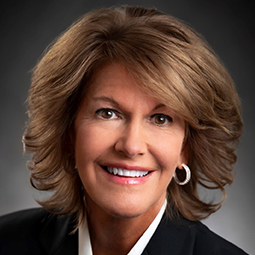Financial Planning
Resisting Retirement?
June 29, 2021
It’s said that 65 is the new 45.
Those two decades might be a stretch… still, America’s view of retirement age could use a facelift.
AARP surveys1 find about seven in 10 baby boomers are working after age 65. On average, respondents don’t expect to leave work completely until age 72. (Though about half will clock in with reduced hours.) Reasons vary of course; many seniors are not financially prepared. Increasingly though, older Americans simply want to stay engaged in meaningful daily activities. The trend suits employers who hate to see that experience walk out the door.
These workers are what Economist Magazine calls the “yolds,” young-olds or people ages 65 to 75 who reject retirement. It is the yolds with college degrees and higher incomes who are more often choosing to “take this job and love it!”; a good thing at present, when working age people are not returning as quickly as expected after a serious COVID slump.
If you are approaching age 65 and plan to remain employed, be advised, there are some actions you need to consider even if your job provides important benefits.
Social Security
You can get Social Security benefits (including survivor benefits) and stay employed at the same time. However, if you are younger than full retirement age* and earn more than certain income thresholds, your benefits will be reduced. (Income thresholds change annually). If you chose to delay social security benefits past your full retirement age, your benefits will increase for each month you do not receive them until age 70. There is no incentive to delay benefits after age 70. Continuing to work may also increase your benefits if your current earnings replace an earlier year of lower or no earnings.
Medicare
If you are nearing 65 and not receiving social security benefits, contact the Social Security Administration three months prior to your 65th birthday to sign up for Medicare. However, if you are 65 and your medical insurance is covered through a current employer’s group health plan, you have a few options:
- Stay on employer plan, do not sign up for any part of Medicare. Medicare states that if you have health coverage through an employer, and that employer has 20 or more employees, you are not required to enroll in Medicare. You can delay enrollment into Medicare, without penalty, until you are ready to come off the employer plan (either at retirement or at the employers open enrollment period).2
- Stay on employer plan, just enroll in Part A of Medicare. Many people enroll only in Part A of Medicare because they think they have to, but they do not, it is strictly optional. There is no monthly cost to Part A and it will act as a secondary insurance plan to the employer plan for any inpatient hospital expenses. The only reason not to enroll in Part A is if you are on the Health Savings Account (HSA) plan at work. Medicare states that if you are enrolled in any part of Medicare, you can no longer contribute money to the HSA and neither can the employer. This rule only applies to the employee. If a spouse enrolls in Part A there is no negative impact. You can still contribute to the HSA up to the family max and use the money for the spouse’s medical expenses. If you are on a more traditional health plan (non-HSA) there is no downside to enrolling in Part A.3
- Come off the employer plan, enroll in Medicare. This choice depends on many factors; how much are you paying for your employer coverage, is that coverage a good fit for your health needs, and how does that coverage compare to the cost/coverage of Medicare? Basic, hospitalization-based Medicare coverage (Part A) is usually free, but does NOT cover many items including doctor visits, outpatient prescription drugs, medical services and supplies. For those you need supplemental Medicare coverage (Part B, C and/or D), which are an additional expense. As a result, Medicare could cost more per month than what you are paying, but the coverage may be more comprehensive (lower out of pocket and larger network of providers).4 It’s best to discuss the options with your employer’s benefits coordinator to make an informed decision.
Remember, Bahl & Gaynor is here to help answer any questions you have. Our goal is always to work hand in hand with clients on customized plans to meet and exceed expectations. Our financial planners stand ready to discuss strategies to continue to grow and use your assets as your needs and situation changes well into your golden, and yes, working years.

Karen Nimmo, FPQP
Financial Planning Analyst
*This link will help you determine what Social Security considers your full retirement age (it depends on what year you were born).
1 AARP: https://bit.ly/3w4yIfX
2 Medicare.gov: https://bit.ly/3g5RXQk
3 AARP: https://bit.ly/3giQ4Pj
4 Medicare Resource Center: https://bit.ly/3cqBNPq
This commentary is for informational, education, and research purposes only. No fiduciary relationship exists because of this commentary. Past performance is not necessarily indictive of future results. Investing in securities involves risk of loss that the client should be prepared to bear.



